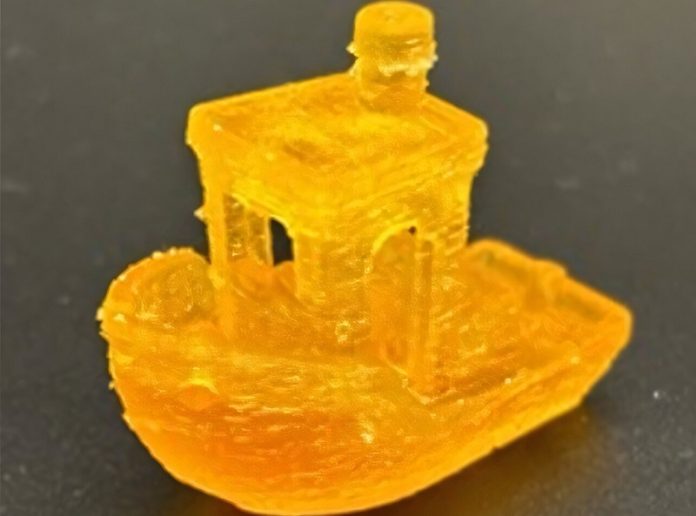
Researchers at Duke University have developed a new type of material for 3D printing that could pave the way for making biodegradable medical implants.
This breakthrough uses a process called digital light processing (DLP), which creates objects by hardening layers of liquid resin with light.
DLP is already popular in fields like dentistry and industry due to its precision and versatility.
However, a major challenge with DLP printing is that the resins used need to be very thin, almost like water, to create high-resolution parts.
Many useful polymers are either solid or too thick to work with DLP without adding solvents to make them thinner.
But using solvents can lead to problems, such as the printed parts shrinking (sometimes up to 30%) as the solvent evaporates, causing stress and poor accuracy.
In a new study published in Angewandte Chemie International Edition, Duke researchers have invented a new polymer that doesn’t need solvents, solving this key issue.
This solvent-free material eliminates shrinking and results in stronger and more durable printed parts. The research was led by Maddiy Segal, a Ph.D. candidate working in the lab of Professor Matthew Becker.
“I wanted to create a thin, low-viscosity material for DLP that could be used for making degradable medical devices,” Segal explained. After many trials, she successfully identified the right combination of components to create a resin that didn’t require dilution with solvents.
To find the right formula, Segal analyzed the structure and properties of existing resins, making changes to the polymer’s building blocks in a step-by-step process.
She described her method as a “guess and check” approach, similar to cooking. It involved mixing ingredients, heating them, and then testing the results.
After experimenting with about 60 different combinations, she achieved her goal.
When Segal tested her new material, she was pleased to see that the printed parts did not shrink or distort and were stronger than those made using solvent-based resins. This is one of the first demonstrations of improved strength by removing solvents from DLP printing.
Beyond strength and accuracy, Segal’s main focus is on medical applications. The goal is to create prototype devices that are both biocompatible and degradable.
Many current medical implants are not biodegradable, requiring multiple surgeries to remove them once they’ve served their purpose. Segal aims to change that by developing implants that can degrade naturally in the body, eliminating the need for removal surgeries.
The material could also be used as a temporary adhesive for bone fractures or in soft robotics, where a soft, degradable material is needed. Segal envisions this technology being applied to any implant that needs to degrade over time and not remain in the body permanently.
“This kind of material is what makes this the main focus of my work,” Segal said. “It opens the door for creating implants that serve their purpose and then safely disappear on their own.”
Source: Duke University.



